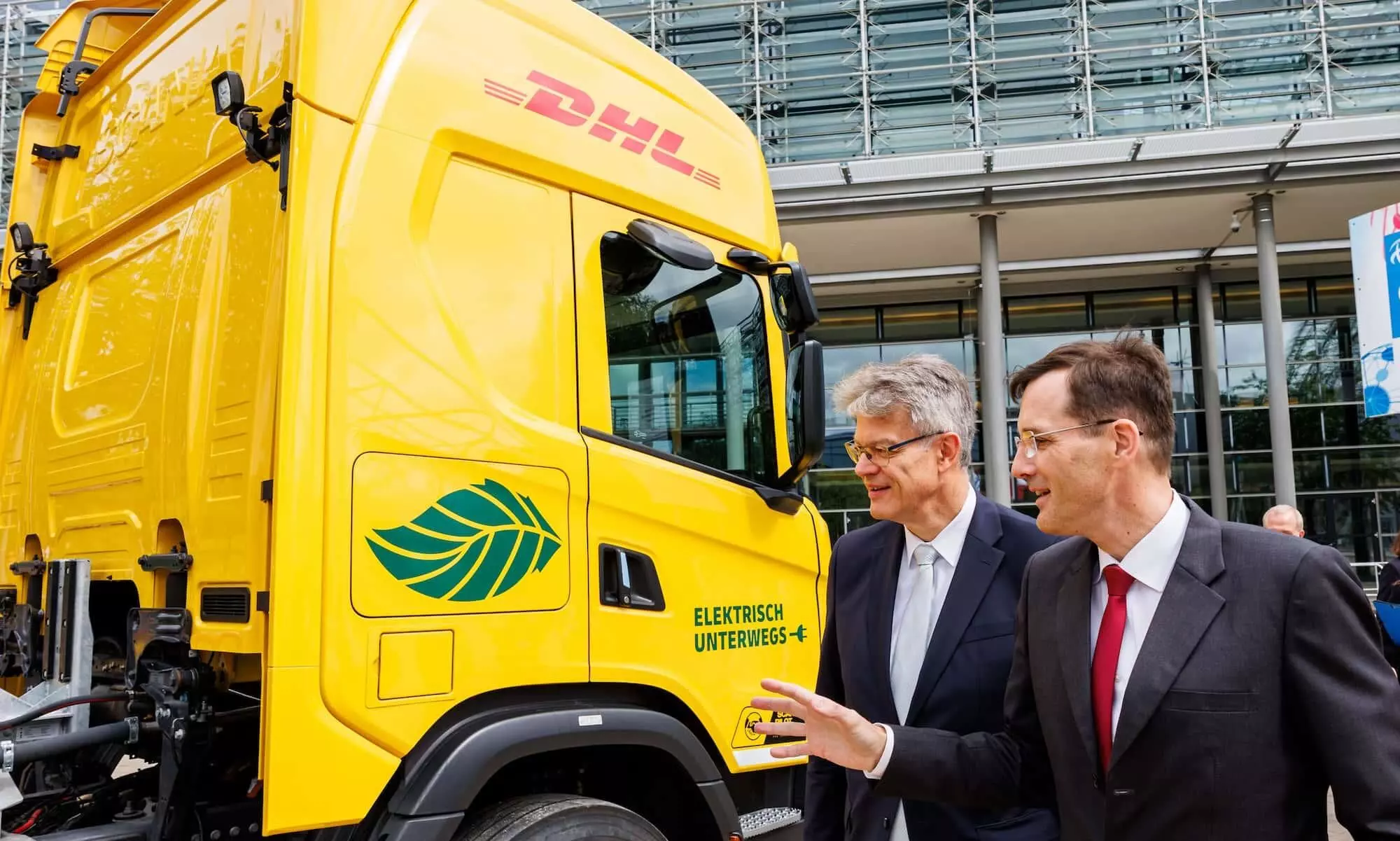
DHL completes 100-day test of new Scania e-truck
After approx. 22,000 kms driven, the vehicle provides the necessary flexibility & operates 90% time in electric mode.

(From right): Tobias Meyer, CEO, DHL Group explains the new EREV truck from Scania to Federal Transport Minister Patrick Schnieder.
DHL Group unveiled the Extended Range Electric Vehicle (EREV) developed in collaboration with heavy vehicle maker Scania at the OECD International Transport Forum in Leipzig.
"The EREV is an electric truck equipped with a fuel-powered backup generator that generates electricity to recharge the batteries when they are running low. This new truck concept is being extensively tested by DHL for package transport between Berlin and Hamburg," says an official release from DHL.
The results after the first 100 days were very positive: the EREV covered nearly 22,000 kilometers, operating more than 90 percent of the time in electric mode. The range extender was activated in only about 8.1 percent of the kilometers driven, the release added.
"As a result, the EREV saved more than 90% of CO2 emissions compared to a conventional diesel truck during the testing period. At the same time, it enhances operational flexibility by providing an additional energy reserve when no charging station is available, unlike a fully electric truck. The generator itself cannot directly drive the vehicle's drive axle. In that sense, the EREV is different from conventional hybrid vehicles and a novel concept with great potential to support the transition to electrified transport, both for the transport operator and the transport system."
The test between the DHL parcel centres in Berlin and Hamburg demonstrated that the EREV is a practical and, above all, sustainable means of transport for logistics.
Tobias Meyer, CEO of DHL Group says: "We all - businesses, politics and society - want fewer emissions through increased e-mobility in freight transport. At the same time, all experts know that the transition to fully electric trucks will take many years, primarily because the grid and charging infrastructure are inadequate. But we should not be forced to wait. We need pragmatic solutions like the EREV and quick political decisions to enable such bridging technologies. We want to decarbonise the transport sector now and regulation should not hinder but support us to do so."
The EREV is a 10.5-metre-long truck (excluding a trailer) with a permissible total weight of 40 tonnes, powered by a 230 kW electric motor (295 kW peak). The energy currently comes from a 416 kWh battery and a fuel-powered 120 kW generator in the prototype. The next version is expected to feature a larger battery with 520 kWh. EREVs can be equipped with software that limits the use of the fuel-powered generator, ensuring a guaranteed reduction in greenhouse gas emissions and capping them at a specific level. The truck's maximum speed is limited to 89 km/h, and it has a capacity of about 1,000 packages (the volume of a swap body). Additionally, the truck can tow a trailer with another swap body, the release added.

